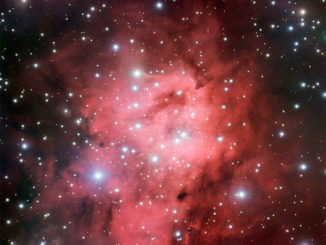About 4,200 light years from Earth, a massive star is emitting torrents of ultraviolet radiation, ionising surrounding gas in an expanding bubble some 10 light years across. A shock wave sweeps up surrounding gas and dust that eventually collapses into cold clumps dense enough to provide the right conditions for star birth. But the clouds are still so cold, around -250 Celsius, that they can only be seen at submillimetre wavelengths. This image of RCW120 in the constellation Scorpius was captured in 2008 with the LABOCA camera on the Atacama Pathfinder Experiment – APEX – telescope in Chile’s Atacama desert.




